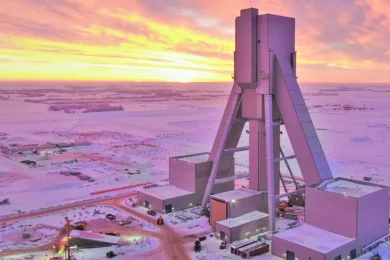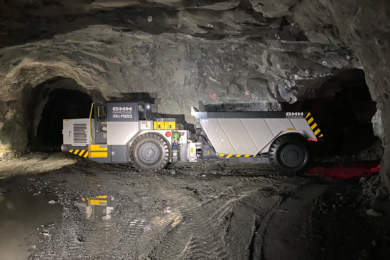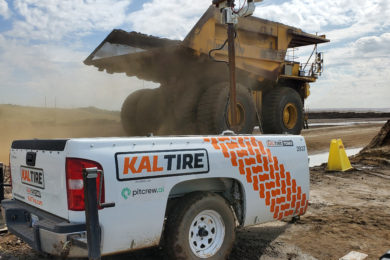Following its official opening by Russian mining and steel group Metalloinvest, JSC Novokramatorsky Mashinostroitelny Zavod (NKMZ) in Ukraine has given some details on its role in the design, manufacture and successful commissioning of a crushing and conveyor complex with a unique high angle conveyor at Mikhailovsky GOK in Russia’s Kursk region. The official commissioning took place on November 20, 2020.
Yuri Silchenko, NKMZ Chief Designer, Mining Department notes: “Most of the open pit mines for the extraction of minerals in Ukraine, Russia, Kazakhstan and Uzbekistan today have exceeded a depth of more than 300 m. At such depths, the use of only road and rail transport makes the transportation of minerals very expensive, so the cost of the final product increases sharply. Therefore, mining and processing plants will have to choose conveyor transport. After evaluating the operation of the crushing and conveyor complex, the technology will have been shown to work not only with soft gold-bearing ores, as in the Navoi Mining and Metallurgical Combinat example in Uzbekistan, but also with heavy iron ores such as in the Mikhailovsky mining and processing complex.”
NKMZ manufactured and supplied about 7,000 t of equipment to the Mikhailovsky mining and processing plant. The project implementation period was three years. The main parameters of the high angle conveyor are a capacity of 15 Mt/y of ore, angle of 37 degrees, lift height of 215 m, belt speed more than 3 m/s, and use of a sandwich conveyor design. The complex includes a crushing and reloading plant, where the iron ore delivered by dump trucks undergoes two crushing stages and is crushed to -150 mm in size. Then the ore is transferred by a high angle conveyor 215 m to the high pit edge and a stockpile conveyor with stacker loader.
NKMZ specialists completed the crushing and conveyor complex of Mikhailovsky mining and processing plant on a turnkey basis. In addition they performed mining and geological and environmental surveys, and prepared documents for State departments of the Russian Federation on this project. “The high angle conveyor is part of the know-how of NKMZ. Among the CIS countries, only our company has experience in creating such unique conveyors. The first of them was commissioned in 2011 in the Muruntau open pit mine of the Navoi Mining and Metallurgical Combinat in the Republic of Uzbekistan.”
The company adds that the effectiveness of the unique high angle conveyor and other equipment of cyclic-flow technology produced by NKMZ is evidenced by the positive feedback from the Uzbek gold miners. Denis Aldokhin, Deputy General Director of Marketing, talks about the future of high-angle conveyor technology: “Currently, a significant part of open pit mining has entered the deep category and this trend continues. Today, nobody has no doubt about the economic and environmental feasibility of high-angle conveyors for lifting the rock from deep open pits. The using of a high-angle conveyor lifting is practically the only cost-effective solution.” Another component of the high angle conveyor’s efficiency is the improvement of the environmental situation in an open pit and in the surrounding area by reducing the number of heavy vehicles.
“NKMZ has established itself as a reliable partner, a manufacturer of high-quality equipment,” said Nazim Efendiev, CEO of Metalloinvest Management Company at the ceremony. Describing the significance of the new complex, he said: “The introduction of a new configuration of the mining transport scheme will allow us to reduce the cost of ore mining. We are proud to be the first in Russia to launch high angle conveyor technology, which significantly increases the efficiency of the production process. The high angle conveyor allows us to use high the number of transshipment points, loading equipment and railway transport is reduced. The use of conveyor technology will make it possible to use natural resources more carefully and reduce the amount of overburden.”










